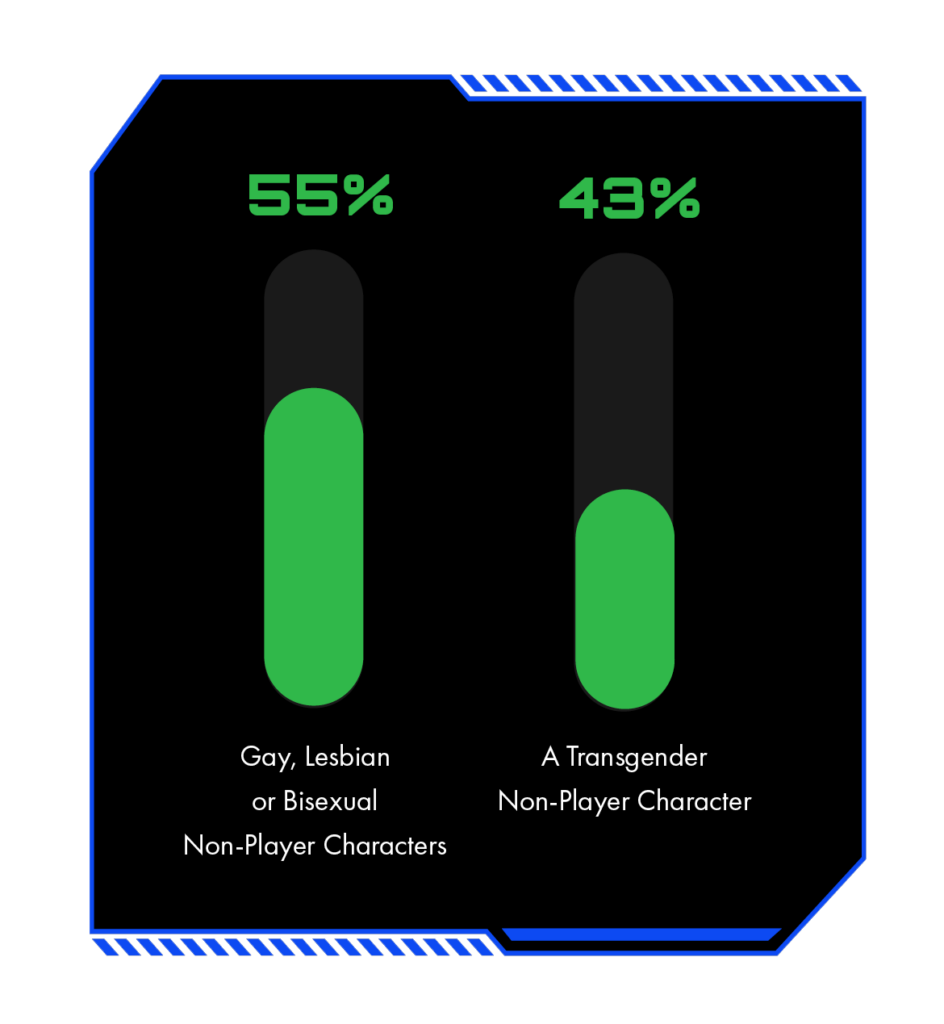Opinions on Optional or Secondary LGBTQ Representation
Optional or secondary representation has been one of the primary ways the game industry has thus far included LGBTQ characters. Allowing players to decide if they want their character to romance same-sex non-player characters, and increasingly adding more diverse options for character customization, have been stand-ins for more robust and impactful LGBTQ representation for decades.
When it came to our questions about optional or secondary representation, the proportion of non-LGBTQ players who say they would be less likely to buy or play a game decreased significantly compared to our questions about main/playable characters. 68–70% of non-LGBTQ gamers say the option to be LGBTQ, or having an LGBTQ non-player character storyline in a game, makes no difference to their intention to buy it or play it. Moreover, 63% of LGBTQ gamers are more likely to buy or play a game with the option to be lesbian, gay, or bisexual, and only 36% say it would make no difference to them. 43% of LGBTQ gamers are more likely to buy or play a game with a trans non-player character storyline, and 55% of LGBTQ gamers are more likely to buy or play a game with a lesbian, gay, or bisexual non-player character storyline. This is unsurprising because although games have rarely included main LGBTQ characters, some genres have long included LGBTQ identities as possible within character creation or romance options. These findings suggest that gamers can become more comfortable with content as they are introduced to it. However, this can only be borne out if games begin to have more LGBTQ content and LGBTQ protagonists.
While overall 30% of non-LGBTQ gamers affirm they’d be less likely to buy or play a game with a transgender main character, only 20% affirm they’d be less likely to buy or play a game with the option of a playable transgender character, and 24% affirm they’d be less likely to buy or play a game if there was a storyline involving a transgender non-player character. We saw the most resistance among all respondents to transgender representation in games, and yet when that content is optional or secondary, that resistance lessens. Among LGBTQ gamers, 46% are more likely to buy a game if there is an option to be transgender. 48% state it would not make a difference.
Although secondary or optional representation is not as impactful when it comes to creating meaningful LGBTQ content, such options would be profoundly meaningful for LGBTQ gamers and could pave the way for more LGBTQ inclusion. Optional representation should be seen as a starting place and not an end goal when it comes to LGBTQ inclusion in video games.
LGBTQ gamers are much more likely to buy or play a game with LGBTQ representation
More likely to buy or play a game where the main playable character has the option to be…

More likely to buy or play a game that contains a storyline involving…

The majority of non-LGBTQ gamers are not dissuaded from trans representation in games
Non-LGBTQ gamers who are just as likely or more likely to buy or play a game when learning….













